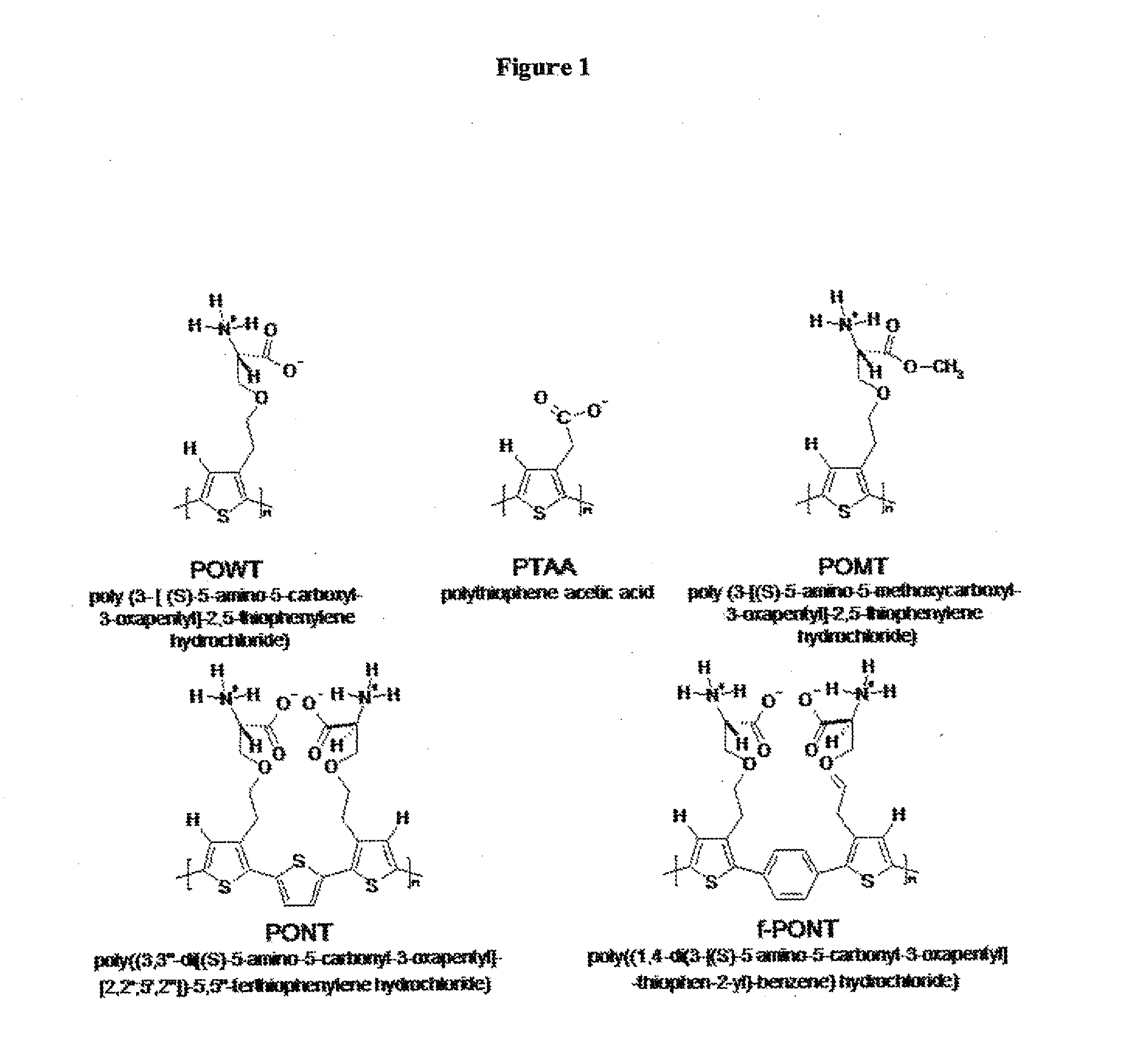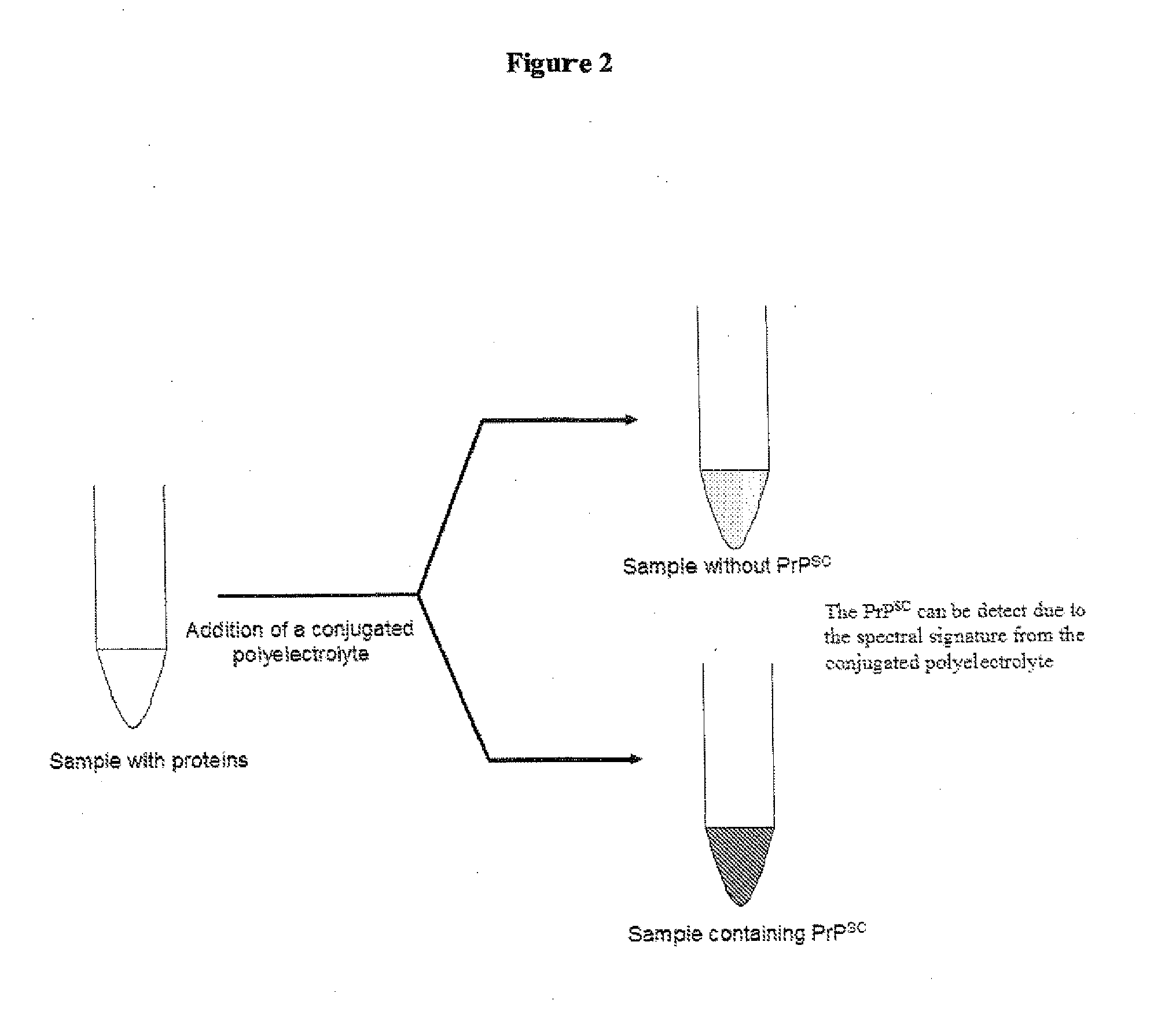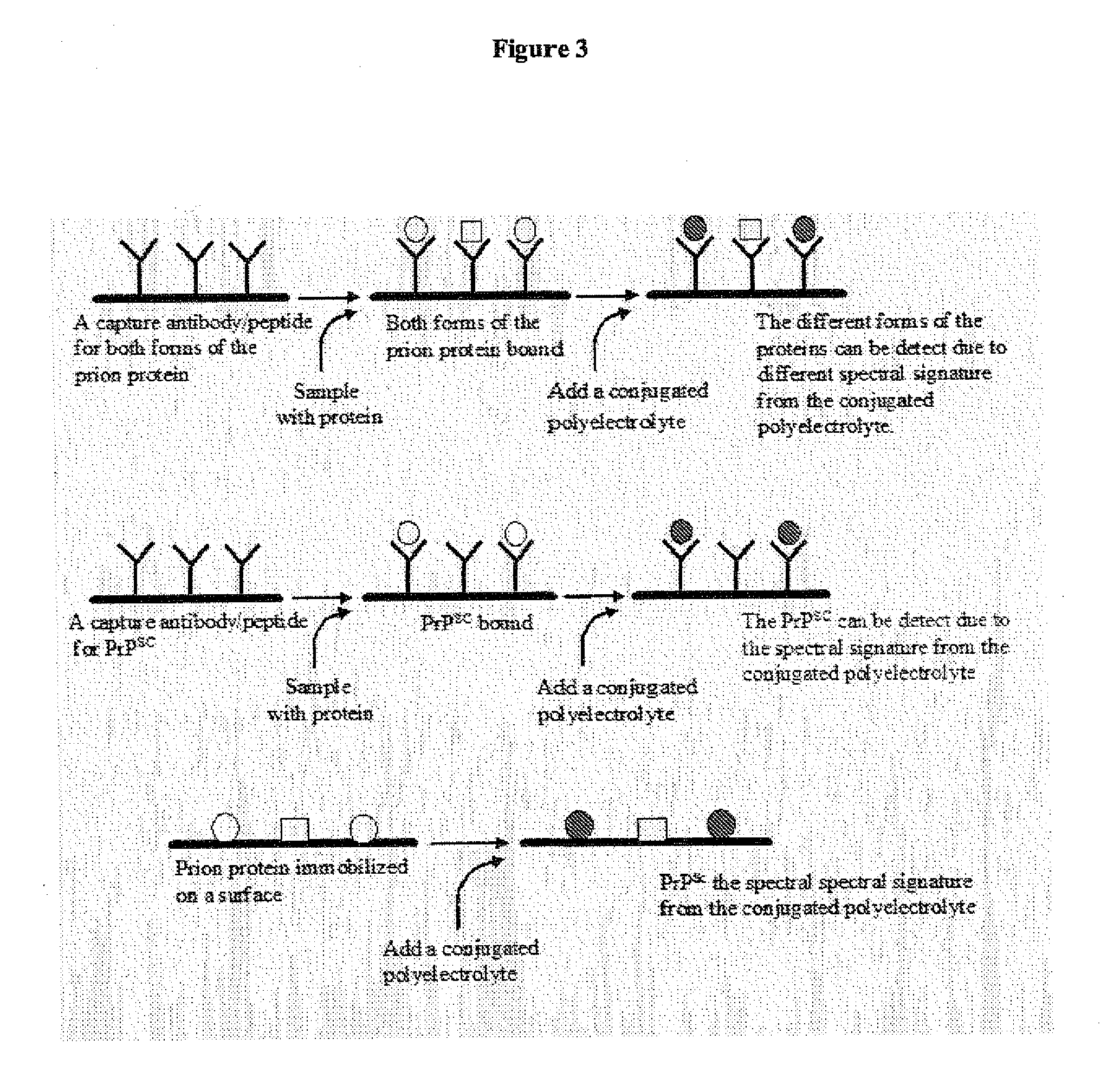Methods for detection of pathogenic prion proteins associated with prion diseases, using conjugated polyelectrolytes
a technology of conjugated polyelectrolytes and prion proteins, which is applied in the field of pathogenic prion proteins associated with prion diseases, can solve the problems of limited early stage therapeutic interventions for misfolding diseases, and achieve the effect of facilitating a greater understanding of the conformational phenotype encoded
- Summary
- Abstract
- Description
- Claims
- Application Information
AI Technical Summary
Benefits of technology
Problems solved by technology
Method used
Image
Examples
example 1
Histological Staining of Scrapie Infected Nervous Tissue from Sheep
[0060]Sections (5 μm) from formaldehyde-fixed, paraffin-embedded amyloid-containing tissue were placed on plus-slides and deparaffinized with xylene (60 min), absolute alcohol (15 min), 95% alcohol (15 min) and 70% alcohol (10 min) and finally rinsed in distilled water for a couple of minutes. The sections were equilibrated in incubation buffer solution, 100 mM Na-Carbonate pH 10, for 10 min. PTAA were mixed with the same buffer used for equilibration (5 μg probe in 100 μl) and added to the sections. The incubation took place in a humidity chamber for 1 hour and superfluous probe solution was washed away with incubation buffer. When PTAA binds to or interacts with the misfolded prion protein (PrPSc), the misfolded pathogenic prion protein is associated with Scrapie disease normally seen in sheep, it can be detected by electromagnetic radiation or absorption, preferably between UV and IR range, optimal in the visible ...
example 2
Histological Staining of Non-Infected Nervous Tissue with PTAA
[0061]Sections (5 μm) from formaldehyde-fixed, paraffin-embedded amyloid-containing tissue were placed on plus-slides and deparaffinized with xylene (60 min), absolute alcohol (15 min), 95% alcohol (15 min) and 70% alcohol (10 min) and finally rinsed in distilled water for a couple of minutes. The sections were equilibrated in incubation buffer solution, 100 mM Na-Carbonate pH 10, for 10 min. PTAA were mixed with the same buffer used for equilibration (5 μg probe in 100 μl) and added to the sections. The incubation took place in a humidity chamber for 1 hour and superfluous probe solution was washed away with incubation buffer. The fluorescence from the tissues samples can be recorded with an epifluorescence microscope (Zeiss Axiovert inverted microscope A200 Mot) equipped with a CCD camera (Axiocam HR), using a 405 / 30 nm bandpass filter (LP450), a 470 / 40 nm bandpass filter (LP515) and a 546 / 12 nm bandpass filter (LP590)....
example 3
Histological Staining of Chronic Wasting Disease (CWD) Infected Mouse Tissue with PTAA
[0062]Frozen sections from CWD infected mouse brain were fixed in ice cold ethanol for 10 minutes and washed with buffer solution, 100 mM Na-Carbonate pH 10. The sections were equilibrated in incubation buffer solution, 100 mM Na-Carbonate pH 10, for 10 min. PTAA were mixed with the same buffer used for equilibration (5 μg probe in 100 μl) and added to the sections. The incubation took place in a humidity chamber for 1 hours and superfluous probe solution was washed away with incubation buffer. When PTAA binds to or interacts with the misfolded prion protein (PrPSc), the misfolded pathogenic prion protein is associated with chronic wasting disease normally seen in deer, it can be detected by electromagnetic radiation or absorption, preferably between UV and IR range, optimal in the visible range. In the visible range it is normally seen as a change of the color and the intensity of the emitted ligh...
PUM
| Property | Measurement | Unit |
|---|---|---|
| wavelengths | aaaaa | aaaaa |
| wavelengths | aaaaa | aaaaa |
| pH | aaaaa | aaaaa |
Abstract
Description
Claims
Application Information
 Login to View More
Login to View More - R&D
- Intellectual Property
- Life Sciences
- Materials
- Tech Scout
- Unparalleled Data Quality
- Higher Quality Content
- 60% Fewer Hallucinations
Browse by: Latest US Patents, China's latest patents, Technical Efficacy Thesaurus, Application Domain, Technology Topic, Popular Technical Reports.
© 2025 PatSnap. All rights reserved.Legal|Privacy policy|Modern Slavery Act Transparency Statement|Sitemap|About US| Contact US: help@patsnap.com



